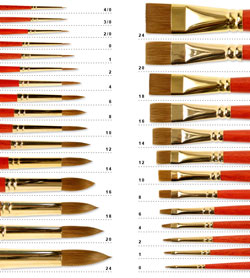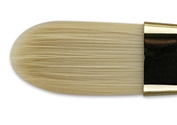|
| Elements of Art | |
| Principles of Design | |
| Color Theory | |
| Drawing | |
| Pencils | |
| Brancusi | |
| Construction Lines | |
| Painting | |
| Pigments/Paints | |
| Brushes | |
| Grounds | |
| Aboriginal Art | |
| Native Art | |
 |
||||||||||||||||||||||||||||||||||||||||
 |
||||||||||||||||||||||||||||||||||||||||
 |
||||||||||||||||||||||||||||||||||||||||
| tools used to apply paints and inks to a surface, consisting of bristles held in place by a metal band attached to a handle. | ||||||||||||||||||||||||||||||||||||||||
| Bristles may be natural or synthetic. Brushes for acrylic paints generally have nylon bristles. Synthetic brushes are cheaper than natural brushes. A brush used with acrylics can be used with oil colors. | ||||||||||||||||||||||||||||||||||||||||
 |
||||||||||||||||||||||||||||||||||||||||
| brushes can be hard or soft. | ||||||||||||||||||||||||||||||||||||||||
| Hard brushes are resilient, flexible and tough. They are stiff and tend to leave their mark in the paint stroke they make. They hold a lot of paint. Soft brushes tend NOT to leave stroke marks, and deposit paint evenly and smoothly. |
||||||||||||||||||||||||||||||||||||||||
 |
||||||||||||||||||||||||||||||||||||||||
| back to top | ||||||||||||||||||||||||||||||||||||||||
| There are five basic brush shapes: | ||||||||||||||||||||||||||||||||||||||||
|





